British automaker Lotus has reached the a tech-heavy Theory 1 concept car that has saluting doors and “soft robotic” seats.
Unlike some other recent concepts cars that have sought to pre-empt how self-driving technology will impact automotive design, the Theory 1 aims to create a new, more immersive driving experience that the brand calls “Lotuswear”.
Theory 1 is a three-seater car, with the driver’s seat located in the middle of the car and two passenger seats nestled behind.
The seats and the steering wheel were upholstered in what Lotus term “soft robotics”, which allows the car to communicate with the driver and passengers by sending out pulses to a series of inflatable pods embedded in the fabric.
For example, pulses on the left side indicate when the driver should make a left turn.
Developed in collaboration with German startup MotorSkins, it is the first time the technology has been applied to a car.
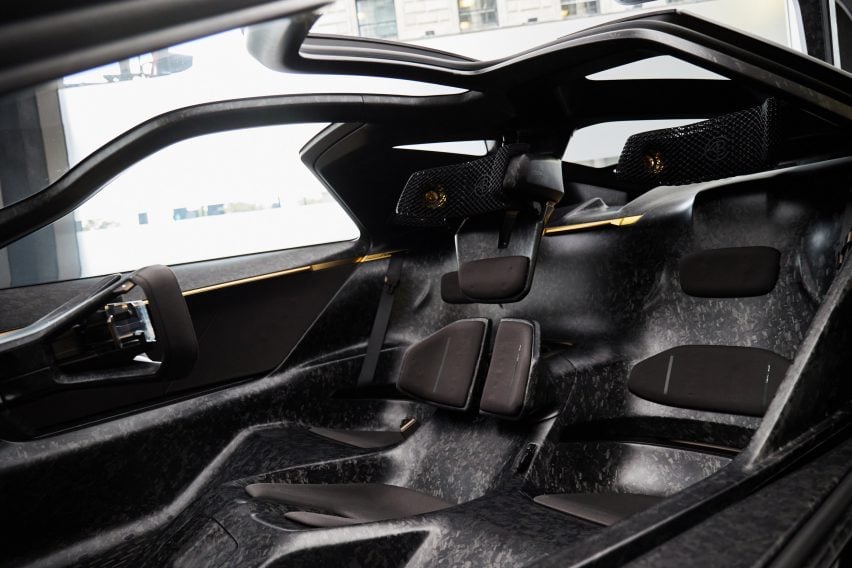
“What we’ve done with Theory 1 is give people a real opportunity to understand what this technology and system could do,” Lotus vice president of design Ben Payne told Dezeen.
“Whether that will be converted commercially is something we will carry on investigating, but what that commercial reality will become remains to be seen.”
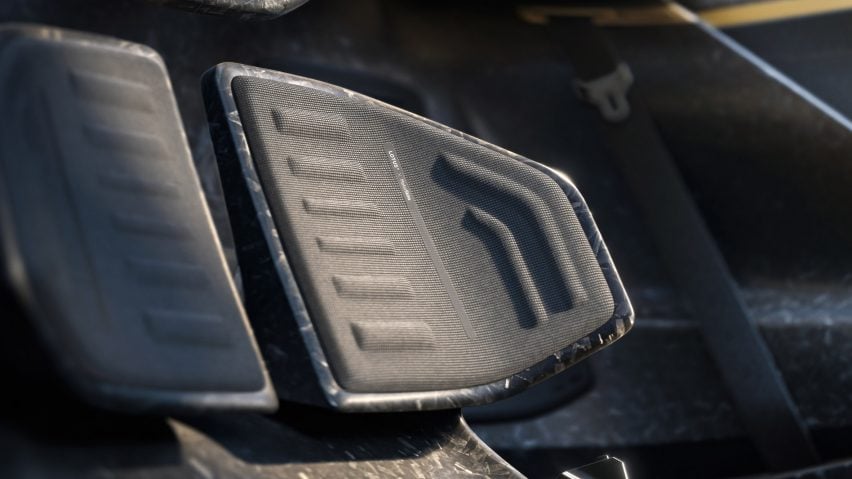
To maximise comfort, reduce weight and optimise aerodynamics, the seat headrests are made from a lattice structure made in partnership with 3D-printing company Carbon,
Speakers designed in collaboration with British audio company KEF sit next to each ear, with each occupant of the car able to choose whether to listen to enhanced driving sounds, noise-cancelling or music or video.
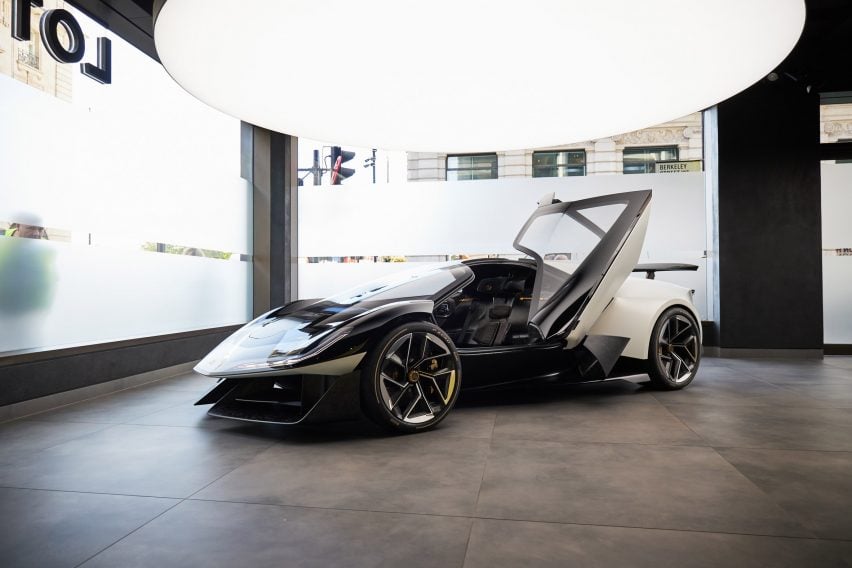
Other eye-catching features include a newly developed door system that sees the doors open by sliding backwards and up into a salute wrapping over the car.
It means the doors open without increasing the car’s footprint, making it easier to get in and out in tight parking spaces.
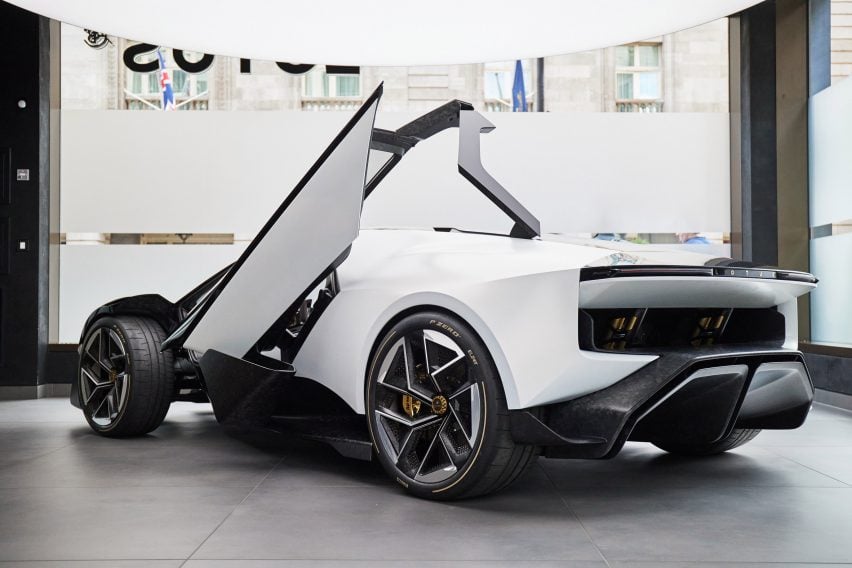
“The primary reason for that door system is to improve the usability of the car,” said Payne. “The thinking around it is a lot more in-depth than just having a ‘wow-factor’ moment.”
“However, what it does deliver is something that is completely unique, which may have brought an even bigger moment than what we were perhaps looking to achieve in the early stages of the project,” he continued.
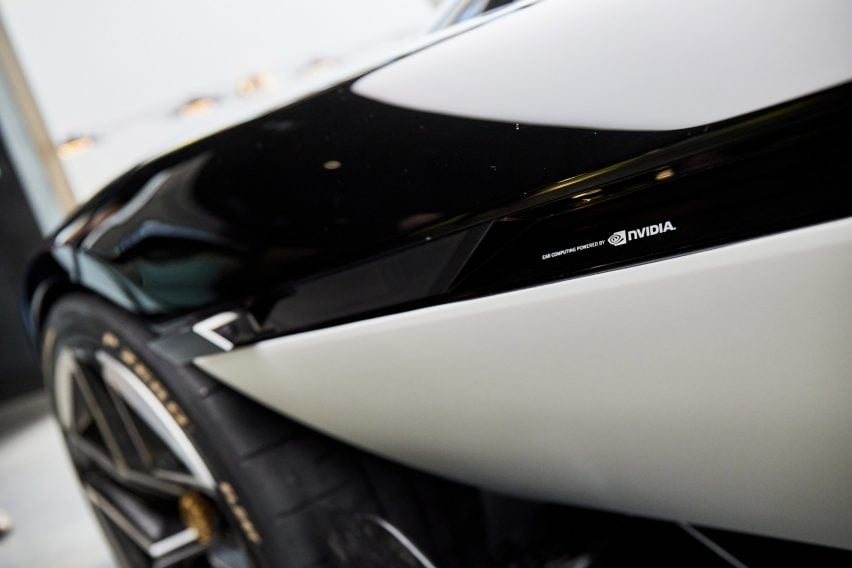
High-tech lighting forms a significant part of the design, with a band of OLEDs running the length of the car both inside and out.
Dubbed the Technology Line and running on an NVIDIA computing system, it lights up to communicate with the driver or other road users and contains a range of sensors and cameras.
Lotus said the feature is an evolution of technology in the interiors of its Eletre and Emeya cars, with the linear form an homage to the classic Esprit.
Meanwhile, the car’s headlights use laser wire from global electronics company Kyocera that is less than a millimetre thick.
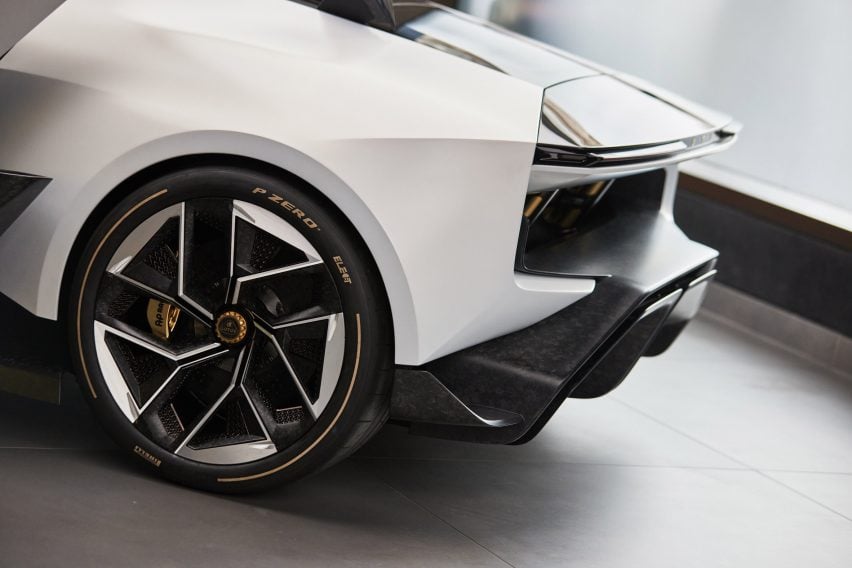
Inside, various LED and laser-light components warn the driver of obstacles and tell them when to turn, brake or accelerate without needing to take their eyes off the road.
While some aspects of its design have more in common with extravagant Italian hypercars than previous Lotus models, the Theory 1 continues the brand’s reputation for minimalist, ultra-lightweight vehicles.
Despite being 4.5 metres long and two metres wide, it weighs less than 1,600 kilograms.
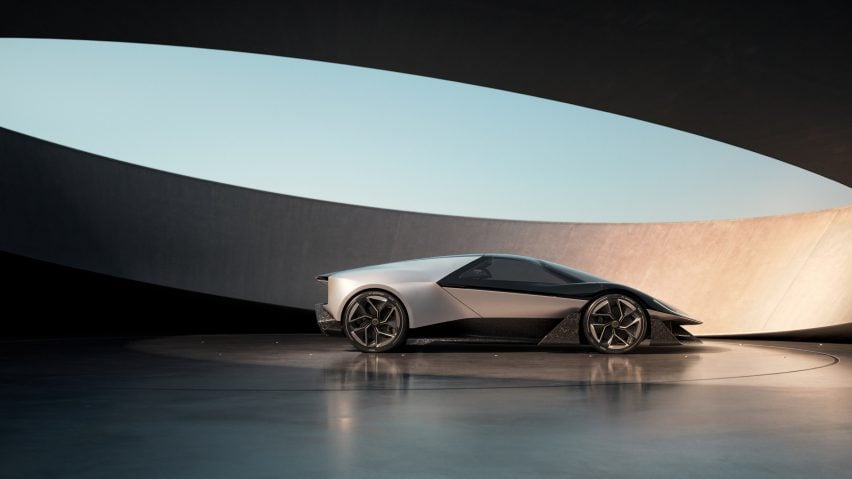
Weight-saving measures include making the motor and battery stress-bearing, reducing the heaviness of the chassis by eliminating the need for a subframe.
As part of its minimalist approach, Lotus used only 10 A-surface materials for the Theory 1, compared to around 100 used in most modern cars. These include recycled carbon fibre, recycled glazing, recycled polyester and recycled aluminium.
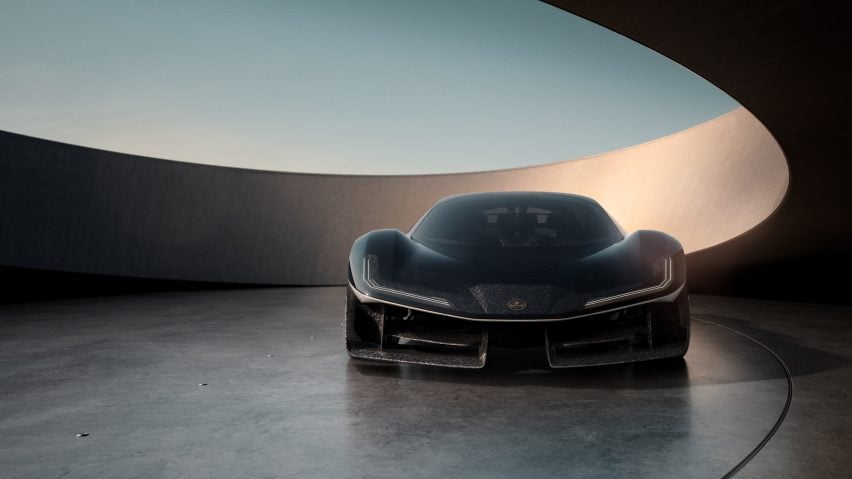
Lotus said it expects new technologies in the Theory 1 to be implemented in future for-sale cars.
The concept car is the first embodiment of “The Lotus Theory”, described by the brand as its “new design manifesto that will form the foundation for all future Lotus cars”.
This approach takes the form of a blend of three principles: “digital”, “natural” and “analogue” – essentially technology, ergonomics and engineering.
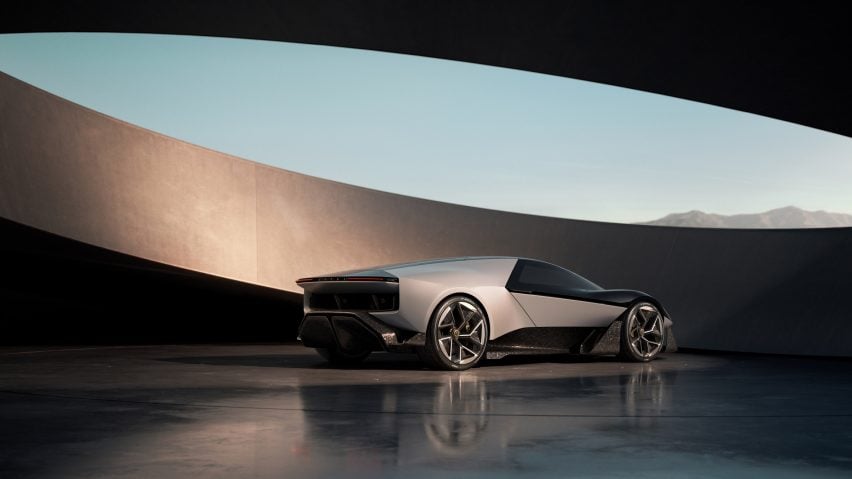
Lotus was the first sports-car company to make a pledge to go all-electric, with a target to move away from internal-combustion engines altogether by 2028.
Other recent concept car launches include Sony and Honda’s Afeela EV, Peugeot’s Inception Concept EV, and the colour-changing BMW i Vision Dee.
The photography is courtesy of Lotus.

